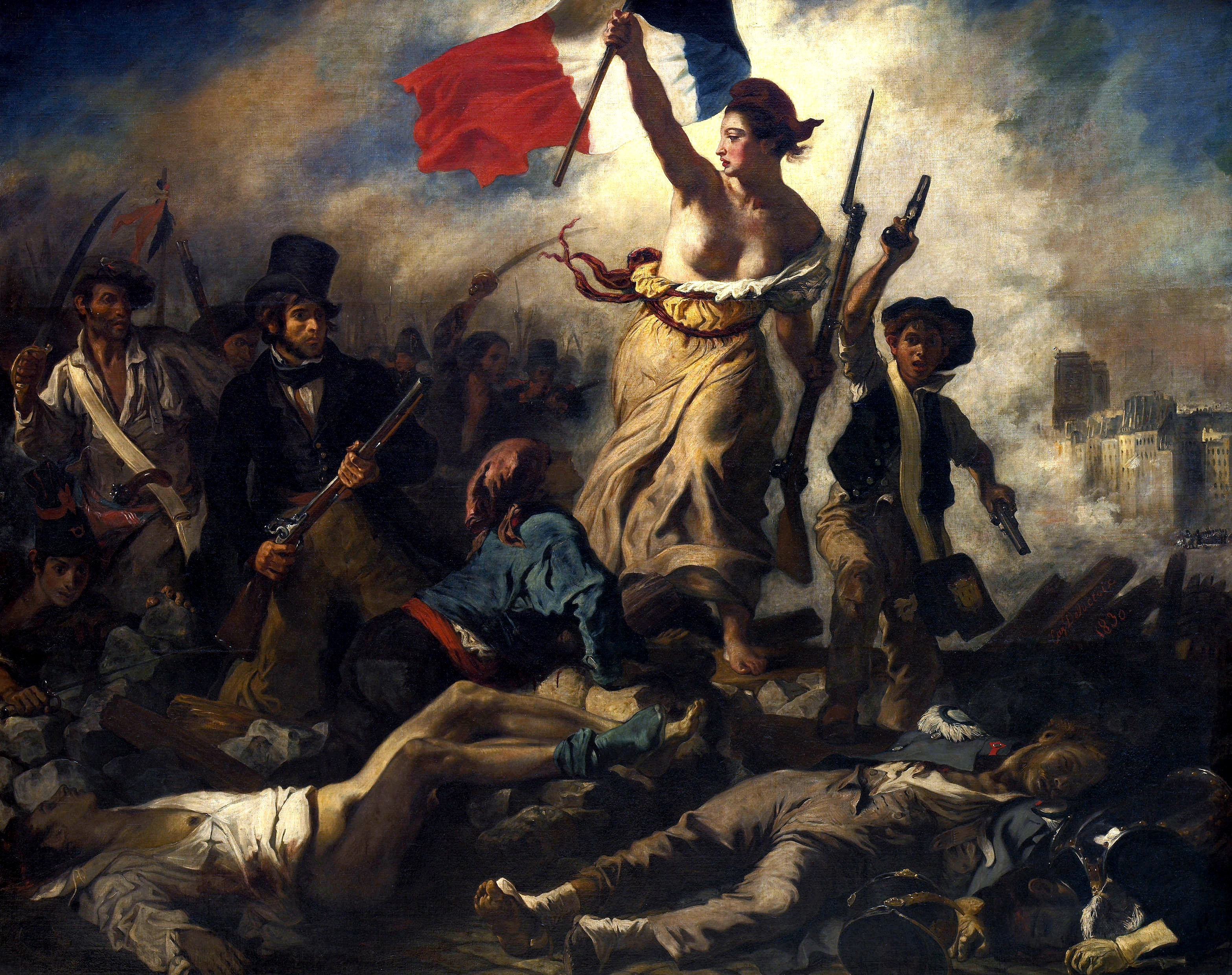Romance: a concept littered with the idea of love, flowers, and .... revolutions? The romantic movement was an artistic movement centered on emotional exuberance, unrestrained imagination, and spontaneity of art and life. This Romantic thought perfectly complemented the political and social situation of the times.

The Romantic movement coincided with rebellions and revolutions throughout Europe. These movements were a hotbed for emotions. The people were inspired with the ideas of liberalism and nationalism and ran with it. Revolutions were emotionally charged as the passion of their caused united the people. The passions of the time were reflected in the emotional art of the times.


The above paintings illustrate the revolutionary thought that was combined with Romantic art. Romantic art and Revolutions perfectly balanced each other with their passionate natures. Emotions ran high in both the art and the political situation.
Of course, we can only thank the Enlightenment for the beauty of the Romantic movement. The Romantic movement was a reaction to the Enlightenment. Where the Enlightenment was facts and reason, the Romantic movement was emotions. The Enlightenment was ruled by the head and the Romantic by the heart.
****
While emotions were governing the heart of many Europeans, Britain was going through a period of reform. Britain at this time was not completely democratic.

There were elements of a democracy, but they had not been combined for a truly democratic nation. The Reform Bill of 1832 was the first steps of England to change this. This bill gave industrial areas more representation and redistributed the seats. More people were finally able to have the right to vote. The Chartist movement took this idea one step further, calling for universal male suffrage. However, they had to wait for a while before their objective was completed.
No comments:
Post a Comment